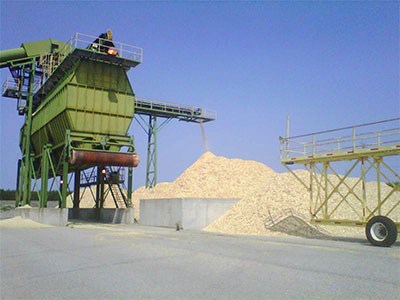Five years after it was mothballed, EACOM’s sawmill in Ear Falls in northwestern Ontario fired up for production in early August.
“Now is the time to start producing some wood,” said general manager Harrison Wicks.
The Montreal-based forestry giant has invested more than $5 million to retrofit the plant with upgrades to the electrical system, planer mill, optimizer scanner, and other machinery in the four to five months leading up to the Aug. 5 production startup.
The plant is located half-way up the Red Lake highway, northwest of Dryden.
The mill’s former owner, Domtar, shuttered the facility in 2009 when the bubble burst in the U.S. home building market.
Ear Falls was one of seven sawmills in Ontario and Quebec that EACOM acquired from Domtar in a $127-million deal in 2010 that included Timmins, Nairn Centre, Gogama and Elk Lake.
Mill restarts are familiar to Wicks, who was previously manager at Nairn Centre, from 2011 to 2013, when upgrades were done there to reopen that asset.
He’s also familiar with the northwest, having worked for Buchanan Lumber near Sioux Lookout for seven years.
As a stud mill, it will again primarily cater to U.S. home builders as consumer confidence starts to increase south of the border.
The mill is capable of producing two-by-three, two-by-four, and two-by-six dimensional lumber of lengths between six and nine feet.
Wicks said they’re leaning away from producing seven footers toward nine-foot lengths to meet market demand.
During July, Wicks said mill staff were training, reviewing safety protocols, and testing equipment while processing small batches of wood.
“We’ve been building our inventory over the last few weeks. As the lumber gets sawn, it goes to our dry kilns, then into the planer. Then it’s pretty much shipped directly on trucks to the customer.”
Some finished product heads to their reload centre in Vermillion Bay, where there’s a CP Rail connection to access customers in the U.S. Midwest.
The annual production target is 70 to 75 million board feet. A second shift, planned for 2015, would boost that to 140 to 150 million.
Wicks said they’ll gradually and safely ramp up to meet those goals.
“We realize our people will need time to settle into these jobs and we have a three to four-month ramp-up. We hope by 2015 to get to our targeted production.”
The company is starting 58 employees on a single shift, said Wicks, with aims on topping out the workforce at close to 100 when a second shift is added early next year.
“For the most part everything’s going fairly well from the hiring perspective,” said Wicks. “There’s excitement in the community.”
Last October, when EACOM announced the mill restart, they signed an eight-year labour agreement with Unifor that included a lucrative attraction and retention bonus of $4.25 an hour that will boost certified trades pay to more than $34 an hour.
Unifor National Representative Stephen Boon is optimistic for the mill’s future and pleased that more than 20 per cent of their members employed are from area First Nations.
“Unifor and EACOM have developed an excellent working relationship through the entire startup process and the big focus right now is recruiting a full contingent of licensed trades.”
Attracting the skilled trades is always a challenge in any industry, but Wicks said they did surprisingly well in recruiting workers who were employed in the mining industry, an hour’s drive up Highway 105 in Red Lake.
“Many of our millwright trades worked in mining and didn’t want to continue to commute to Red Lake, and some had worked here before.”
Wood supply isn’t a problem through an overlapping licence with Domtar, the Sustainable Forest Licence holder in the area.
The mill has access to 660,000 cubic metres annually of softwood, harvested from the Trout Forest.
Power supply in this part of the northwest has been a chronic problem for new and expanding gold mining companies, but Wicks said it currently isn’t an issue for his mill, unless the company decides to plan for a major expansion.
He couldn’t get into specifics on future plans for Ear Falls except to say: “We have some continuous improvement plans and our focus now is to get the mill up and running efficiently.”




